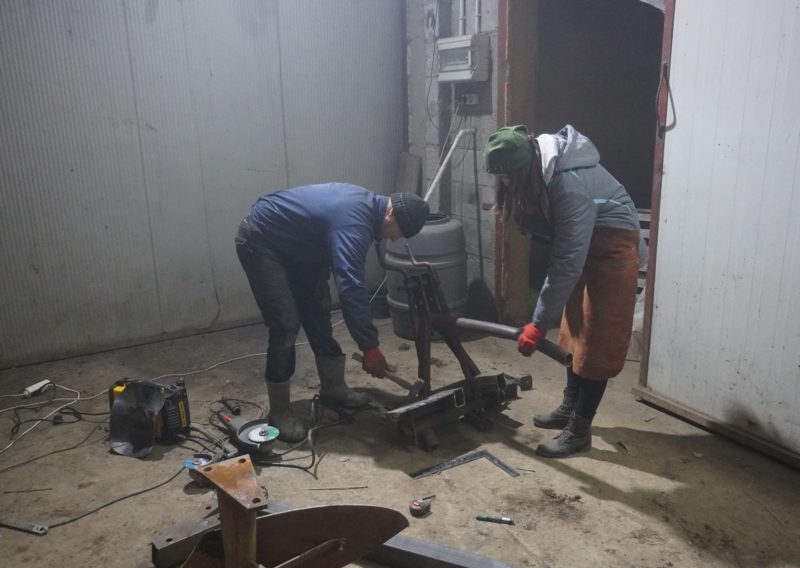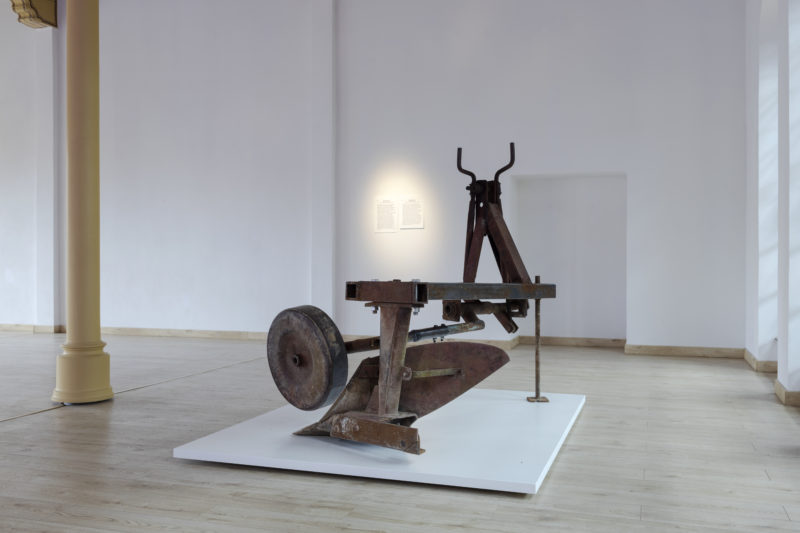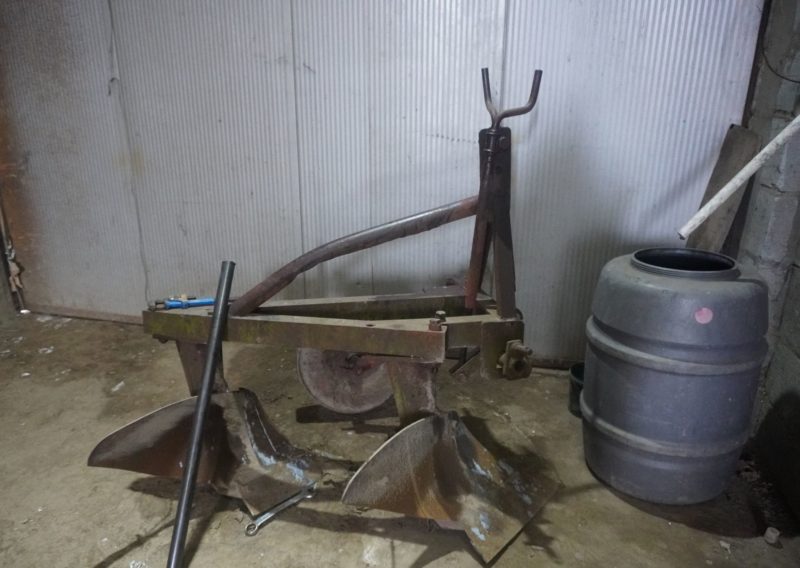
Border Plough
Magdalena Romanowska

The idea of the project was to include a material object perceived as “concrete” in an art presentation – as opposed to the metaphorical or abstract properties of art objects. The artist shows a machine as a two-directional appliance, formed to present relationships between the actors of a reality field in which man is not the essential determining factor. Magda Romanowska’s project refers to the culture of reworked and DIY devices popularly made in rural areas. She collaborated with her father and friend, an amateur constructor of such modified appliances, to build a fully functional sculpture-machine on the basis of a double-furrow plough. The phenomenon of “rural tuning”, often scorned because of the respect for trademark products widespread in capitalist culture, is a domain of ingenuity, self-sufficiency and upcycling. It is a result of shortages on the one hand, and specificity of needs on the other. What Magda Romanowska discovers in it is potential for liberating from the logic of market mechanisms, a source of creativity, but also a way to embodied cognition, in which the immediate environment dictates the conditions of producing an object. The act of transferring the activities to the field of art allows the artist to empower herself in a world which is stereotypically reserved for men.

Oborywacz granic
Magdalena Romanowska is a graduate of the Faculty of Management of Visual Culture of the Academy of Fine Arts in Warsaw (2019). Since 2015, together with her brother, she has been running Plecionka, a village society in her borough. She organizes events and workshops for the local community, including e.g. Local Villages, a photographic project within the framework of the Opportunity Equalizer project. She creates intergenerational projects using artistic means at the “Nowolipie” Centre for Intergenerational Activity (CAM) in Warsaw. She founded the Smoczolipie creative group, integrating the young people of the Wojciech Gerson College of Art with the elderly of the CAM centre. She has collaborated with Czech cultural institutions, including the Plato Gallery in Ostrava (2015), Moravian Gallery in Brno (2016) and the Czech Government as part of the programme HateFree Culture (2017). In 2019, she was an artist-in-residence at KulturKontakt in Vienna. In the years 2014-2018, she was granted the Best Student scholarship of the Rector of the Academy of Fine Arts in Warsaw. She has participated in the following exhibitions: BRAK (LACK), ZNP building in Warsaw (2014, photographs of lands inhabited by former Dutch minority settlers), WIANO (DOWRY), National Ethnographic Museum in Warsaw (2014, concept of the exhibition, a film recorded with young people from the juvenile detention centre in Studzieniec), Coming Out! Best Art School Diplomas, Warsaw (2016, BA project), Local Villages, Przewóz Tarnowski (2016, concept of the exhibition, toy-camera photos of the village Przewóz Stary), an exhibition of the map of Magnuszew Borough and film “Clovek s pucharem, który został sucharem”, with Prague’s FAMU students (2017), end-of-year exhibition at Warsaw’s Academy of Fine Arts (2018, “Homemades and spare parts”).